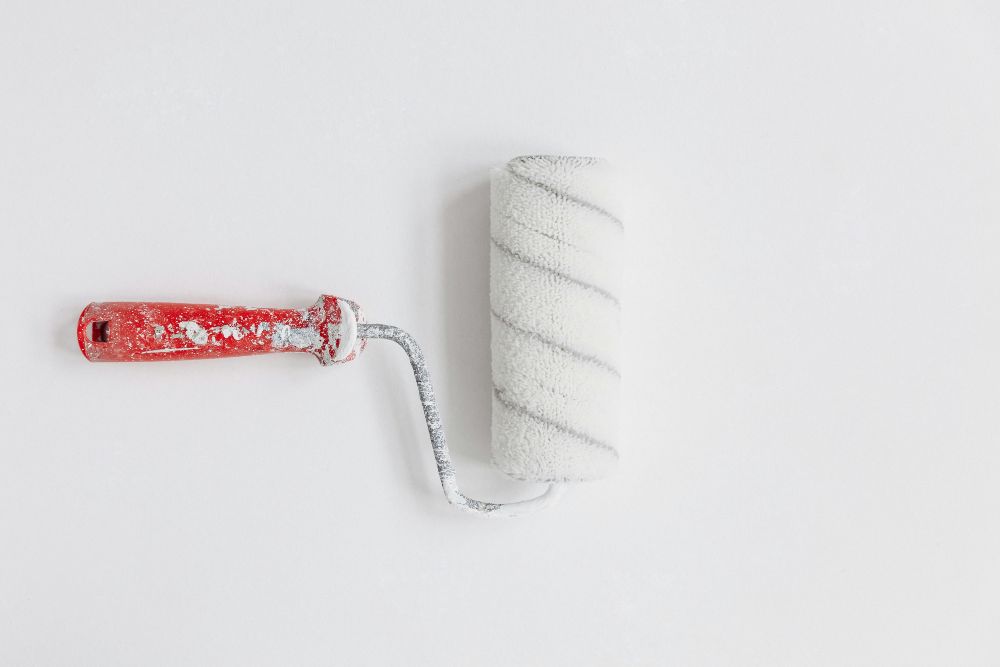In the heart of industrial innovation, the quest for superior materials is never-ending. Picture a bustling paint factory, where vibrant colours come to life, or an ink plant, where precision and permanence are paramount. In the centre of these operations is Titanium Dioxide (TiO2), a compound whose versatile applications have revolutionized the manufacturing landscape. Whether you’re a business owner, director, or general manager, understanding the multifaceted uses and benefits of Titanium Dioxide can significantly enhance your decision-making process and product quality.
Introduction: The Magic of Titanium Dioxide
Imagine stepping into a world where every colour is more vivid, every print more precise, and every plastic product more durable. This isn’t a far-off dream but a daily reality in industries utilizing Titanium Dioxide. For centuries, this white pigment has been the secret ingredient behind the opacity and brightness of paints, the clarity of inks, and the longevity of plastic products. As the demand for high-quality, sustainable manufacturing grows, so does the importance of understanding and leveraging the full potential of Titanium Dioxide.
Understanding Titanium Dioxide
Titanium Dioxide (TiO2) is a naturally occurring oxide of titanium, widely used for its excellent optical and UV-resistant properties. It is the whitest and brightest of known pigments, with a high refractive index that makes it an invaluable component in various manufacturing processes. Key properties include:
- Opacity and Brightness: TiO2 provides superior opacity, making it ideal for applications requiring coverage and colour brightness.
- UV Resistance: It offers excellent resistance to UV light, helping prevent degradation and fading in products exposed to sunlight.
- Chemical Stability: TiO2 is chemically inert, making it suitable for diverse applications without risk of adverse reactions.

Applications in Water-Based and Solvent-Based Paints
Titanium Dioxide (TiO2) plays a pivotal role in the formulation of both water-based and solvent-based paints, enhancing their properties and performance. Understanding its applications and benefits in these types of paints can significantly impact the quality and sustainability of the products.
Titanium Dioxide in Manufacturing: Water-Based Paints
Water-based paints, also known as latex or acrylic paints, have gained popularity due to their lower environmental impact and ease of use. Titanium Dioxide is an essential ingredient in these paints for several reasons:
- Non-Toxic and Environmentally Friendly: One of the primary benefits of water-based paints is their reduced environmental footprint compared to solvent-based paints. Titanium Dioxide, being a non-toxic and inert compound, aligns perfectly with the eco-friendly nature of water-based paints. This makes them safer for use in residential and commercial environments where human health and environmental considerations are paramount.
- Enhanced Color and Coverage: Titanium Dioxide’s high refractive index provides superior opacity and brightness, which are critical for achieving vibrant colors and excellent coverage. This means that fewer coats of paint are needed to cover surfaces adequately, saving time and resources in the application process.
- Durability and Resistance: While water-based paints are known for their easy clean-up and low odor, they must also be durable. Titanium Dioxide contributes to the longevity of water-based paints by enhancing their resistance to UV light and environmental degradation. This ensures that painted surfaces maintain their appearance and integrity over time, even when exposed to harsh weather conditions.
- Applications in Various Settings: Water-based paints containing Titanium Dioxide are widely used in both interior and exterior applications. They are ideal for walls, ceilings, and other surfaces in homes, offices, and public buildings. The bright, clean finish provided by Titanium Dioxide makes these paints a popular choice for creating aesthetically pleasing and inviting spaces.
Titanium Dioxide in Manufacturing: Solvent-Based Paints
Solvent-based paints, also known as oil-based or alkyd paints, are valued for their robust performance characteristics, particularly in demanding environments. Titanium Dioxide is equally important in these formulations for the following reasons:
-
- Superior Dispersion and Stability: In solvent-based paints, Titanium Dioxide offers excellent dispersion, which means that the pigment particles are evenly distributed throughout the paint. This results in a uniform color and finish. Additionally, Titanium Dioxide provides stability to the paint, preventing the pigment from settling over time and ensuring a consistent application.
- Enhanced Gloss and Finish: Solvent-based paints are often preferred for their high-gloss and durable finishes. Titanium Dioxide enhances the glossiness and smoothness of these paints, creating a visually appealing surface that is also easy to clean. This makes solvent-based paints ideal for applications requiring a high-end finish, such as trim, doors, and cabinetry.
- Durability in Harsh Conditions: Solvent-based paints are known for their superior durability and resistance to abrasion, chemicals, and moisture. Titanium Dioxide enhances these properties by providing UV protection and increasing the paint’s resistance to degradation. This makes solvent-based paints suitable for exterior applications, industrial settings, and high-traffic areas where durability is essential.
- Extended Drying Time: While water-based paints dry quickly, solvent-based paints have a longer drying time, which can be advantageous in certain applications. The inclusion of Titanium Dioxide in solvent-based paints ensures that the paint film forms properly, resulting in a tough, durable finish that stands up to wear and tear.

Enhancing Inks and Printing Materials
In the printing industry, the quality of inks directly impacts the final product’s appearance, durability, and overall performance. Titanium Dioxide (TiO2) is a crucial ingredient in ink formulations, contributing significantly to opacity, brightness, and longevity. Here, we delve into the various ways Titanium Dioxide enhances inks and printing materials, making it indispensable for high-quality printing.
1. Achieving Superior Opacity and Brightness
Titanium Dioxide is renowned for its high refractive index, which means it scatters light more effectively than other pigments. This property is vital in ink formulations, as it provides exceptional opacity and brightness. Whether used in white inks or as an additive in coloured inks, Titanium Dioxide ensures that the printed material exhibits vivid colours and clear, sharp images. This is particularly important for applications such as packaging, labels, and high-quality publications, where visual appeal is paramount.
2. Enhancing Colour Vibrancy and Consistency
The inclusion of Titanium Dioxide in inks enhances the vibrancy and consistency of colours. This pigment helps to achieve a uniform appearance, ensuring that colours are consistent across different batches of ink. This is crucial for brand consistency in packaging and advertising, where precise colour matching is essential. By providing a stable and uniform pigment, Titanium Dioxide helps maintain the integrity of brand colours and enhances the overall aesthetic of printed materials.
3. Improving Lightfastness and Durability
Inks used in outdoor applications, such as billboards, signage, and vehicle wraps, must withstand exposure to sunlight and environmental elements. Titanium Dioxide contributes to the lightfastness of inks, meaning they resist fading when exposed to light. This durability ensures that printed materials retain their vibrant colours and sharp details over time, even in harsh conditions. The result is longer-lasting prints that maintain their quality and visual impact.
4. Optimizing Print Quality
High-quality printing requires inks that can produce fine details and sharp contrasts. Titanium Dioxide plays a critical role in achieving these characteristics. Its fine particle size and excellent dispersion properties allow for smooth and even application, resulting in high-resolution prints with precise details. This is essential for applications such as fine art printing, photographic reproductions, and intricate graphic designs, where print quality is of utmost importance.
5. Versatility in Ink Formulations
Titanium Dioxide’s versatility extends to various types of ink formulations, including:
- Offset Inks: Used in traditional offset printing, Titanium Dioxide enhances the opacity and brightness of offset inks, ensuring high-quality prints for newspapers, magazines, and brochures.
- Flexographic Inks: In flexographic printing, commonly used for packaging materials, Titanium Dioxide improves the ink’s opacity and adhesion properties, resulting in durable and vibrant prints on a variety of substrates.
- Gravure Inks: For gravure printing, which is often used for high-volume printing such as wallpaper and gift wrap, Titanium Dioxide provides excellent coverage and colour consistency.
- Screen Printing Inks: In screen printing, used for textiles and promotional items, Titanium Dioxide ensures bright, opaque prints that stand out on both light and dark surfaces.
6. Environmental Considerations
As the industry moves towards more sustainable practices, water-based inks are gaining popularity over solvent-based inks. Titanium Dioxide is compatible with both types of formulations, providing the same level of performance and quality. In water-based inks, it offers a safer and more environmentally friendly alternative without compromising on opacity or brightness. This alignment with sustainability trends makes Titanium Dioxide a preferred choice for modern ink formulations.

Improving Plastic Products
Titanium Dioxide (TiO2) is a crucial component in the plastics industry, offering numerous benefits that enhance the appearance, durability, and overall performance of plastic products. Its unique properties make it indispensable in various plastic applications, from consumer goods to industrial materials. Let’s explore the ways Titanium Dioxide improves plastic products, supported by relevant statistics and market insights.
1. Enhancing Colour and Opacity
One of the primary uses of Titanium Dioxide in plastics is as a white pigment to enhance colour and opacity. TiO2 provides a bright, clean white colour that serves as an excellent base for producing vibrant and consistent colours in plastic products. Its high refractive index and particle size distribution allow it to scatter light effectively, ensuring uniform colour and opacity throughout the plastic. This property is essential for applications such as:
- Packaging: White and coloured packaging materials require high opacity to protect contents from light exposure and to provide an appealing appearance on store shelves. TiO2 ensures that packaging remains opaque and visually attractive.
- Household Items: Many household products, such as containers, toys, and appliances, benefit from the enhanced colour and opacity provided by Titanium Dioxide. This helps in creating aesthetically pleasing and durable items that withstand daily use.
2. Improving UV Resistance
Plastic products used in outdoor applications are often exposed to sunlight, which can degrade their material properties and appearance over time. Titanium Dioxide helps improve the UV resistance of plastics, protecting them from the harmful effects of UV radiation. This protection is critical for extending the lifespan and maintaining the integrity of plastic products such as:
- Outdoor Furniture: Plastic chairs, tables, and other outdoor furniture items are continuously exposed to sunlight. TiO2 enhances their resistance to UV radiation, preventing discoloration and brittleness.
- Automotive Components: Exterior automotive parts, such as bumpers and trim, benefit from the UV protective properties of Titanium Dioxide, ensuring they remain durable and visually appealing despite prolonged sun exposure.
3. Increasing Durability and Longevity
The addition of Titanium Dioxide to plastic formulations significantly increases their durability and longevity. TiO2 enhances the mechanical properties of plastics, making them more resistant to wear, tear, and environmental factors. This is particularly important for applications where plastic products must endure harsh conditions, such as:
- Construction Materials: Plastic components used in construction, such as pipes, panels, and fittings, require high durability. Titanium Dioxide helps these products withstand mechanical stress, temperature variations, and exposure to chemicals.
- Industrial Equipment: Plastics used in industrial settings, including machinery parts and storage containers, benefit from the enhanced strength and durability provided by TiO2, ensuring they can handle demanding operational conditions.
4. Facilitating Manufacturing Processes
Titanium Dioxide also plays a role in improving the manufacturability of plastic products. Its incorporation into plastic resins can enhance processing characteristics, such as melt flow and thermal stability. This results in more efficient manufacturing processes and higher-quality end products. Key benefits include:
- Improved Flow Properties: TiO2 can modify the rheological properties of plastic resins, making them easier to process during extrusion and injection molding. This leads to smoother production runs and reduced defects.
- Thermal Stability: The presence of Titanium Dioxide helps stabilize plastic resins at high temperatures, preventing degradation during processing and ensuring consistent product quality.
5. Environmental Considerations
In addition to its performance benefits, Titanium Dioxide aligns with sustainability trends in the plastics industry. As manufacturers seek to reduce the environmental impact of plastic products, TiO2 offers several advantages:
- Recyclability: Plastics containing Titanium Dioxide are fully recyclable, allowing manufacturers to incorporate recycled materials into their products without compromising quality.
- Reduction in Additives: The high efficacy of TiO2 as a pigment and UV stabilizer can reduce the need for additional additives, simplifying formulations and potentially lowering the environmental footprint of plastic products.

Titanium Dioxide in Other Applications
Beyond paints, inks, and plastics, Titanium Dioxide finds use in several other industries:
- Cosmetics: Used as a pigment and sunscreen agent due to its safety and efficacy.
- Food Industry: Employed as a coloring agent in some foods.
- Pharmaceuticals: Used in tablet coatings and capsule formulations.
The Role of PT. Multi Anugrah Jaya Utama
As a leading supplier of high-quality Titanium Dioxide, PT. Multi Anugrah Jaya Utama plays a crucial role in helping businesses navigate the complexities of selecting the right type of Titanium Dioxide for their needs. With a commitment to quality and competitive pricing, PT. Multi Anugrah Jaya Utama ensures that paint, ink, and plastic manufacturers have access to the best materials available.
Conclusion:
In the ever-evolving world of manufacturing, Titanium Dioxide stands out as a versatile and indispensable material. From enhancing the vibrancy of water-based and solvent-based paints to ensuring the longevity and clarity of inks and plastic products, its applications are vast and varied. For business owners, directors, and general managers, understanding the nuances of Titanium Dioxide can lead to more informed decisions and superior product offerings.
How will your business leverage the power of Titanium Dioxide to stay ahead in the competitive manufacturing landscape?

